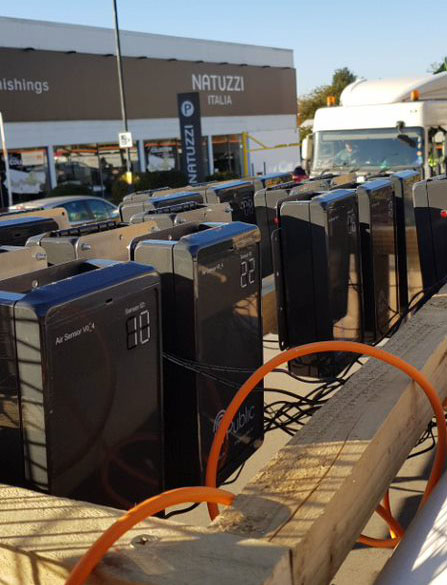AI for sensors
We use and develop machine learning approaches to  (a) improve measurement devices of air pollution and (b) to build empirical air pollution models. The latter can for example be used to fill gaps in measurement networks. Air pollution remains the most significant health concern related to environmenal pollution in Europe. Fast predictions of extreme pollution episodes (e.g. particulate matter, ozone), and measuring personal exposure levels of individuals are therefore major challenges in environmental sciences research.
(a) improve measurement devices of air pollution and (b) to build empirical air pollution models. The latter can for example be used to fill gaps in measurement networks. Air pollution remains the most significant health concern related to environmenal pollution in Europe. Fast predictions of extreme pollution episodes (e.g. particulate matter, ozone), and measuring personal exposure levels of individuals are therefore major challenges in environmental sciences research.
We have for example trained machine learning systems to make faster and better predictions of air pollution, so far focusing on regions in Europe and China. In addition, we have compared and benchmarked machine learning calibration techniques for low-cost air pollution sensors such as those shown in the figure on the right. The development and improvement of low-cost devices will be crucial to make highly individualized measurement campaigns possible and to set up denser measurement networks globally. Ultimately, the hope is that this will also support urgently needed air pollution research in developing countries. Currently, the very expensive measurement stations are still mostly situated in developed countries and low-cost sensors are not generally reliable enough to replace them yet.
Selected publications:
(1) Nowack et al. Machine learning calibration of low-cost NO2 and PM10 sensors: non-linear algorithms and their impact on site transferability. Atmospheric Measurement Techniques (2021).
(2) Hickman et al. Short-term forecasting of ozone air pollution across Europe with transformers. Environmental Data Science (2023).
(3) Weng et al. A machine learning approach to quantify meteorological drivers of ozone pollution in China from 2015-2019. Atmospheric Chemistry and Physics (2022).
(4) Hickman et al. Forecasting European ozone air pollution with transformers. Tackling Climate Change with Machine Learning Workshop at NeurIPS (2022).
(5) Weng et al. Large modeling uncertainty in projecting decadal surface ozone changes over city clusters of China. Geophysical Research Letters (2023).
